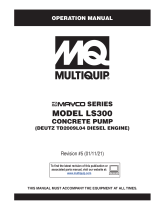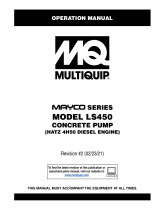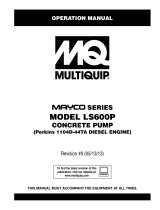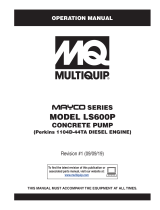Page is loading ...

MIS R21: Maintenance Procedure
Gas/Hydraulic Tank Oil Level
05-09-11
Gas/Hydraulic Tank Oil Level
Maintenance Procedure on a Rotary or Linear Actuator
www.ShaferValve.com

MIS R21: Maintenance Procedure
Gas/Hydraulic tank Oil Level
05-09-11
Page 1
Checking the Fluid Level in Gas/Hydraulic Tanks
WARNING: Before servicing the Gas/Hydraulic Tanks, turn power gas off and bleed down the
power storage tank (if applicable).
This procedure is to be used in conjunction with one of the following Maintenance and Service
Manuals.
Shafer Rotary Vane Maintenance and Service Manual Bulletin RVSM-5/02
Shafer Linear Actuator Installation and Service Manual Bulletin LSM-01102001
Identify the Gas/Hydraulic Tank Size
Note:
Over the six decades of Shafer existence, two “vintages” of gas/Hydraulic tanks exist.
Rotary Vane Actuators
a. 1-1/2 volume tanks (1964 and older).
These gas/hydraulic tanks have a volume 1-1/2 times greater than the actuator
volume.
b. 3 volume tanks (1965 to present)
These gas/hydraulic tanks have a volume 3 times greater than the actuator
volume.
Linear Actuators
Linear Actuators always have used 1-1/2 volume tanks.
Oil Levels
To determine the OPEN and CLOSE tank, stand facing the hand pump; the OPEN
tank will be to your Left and the CLOSE to your right.
a. 1-1/2 volume tanks
(Tank Tag, see Illustration 1)
Remove the diffuser (plug) on top of the tank and extend a tape measure down
to the bottom of the tank through the opening at the top.
a1. Determine actuator position (open or close).
a2. If in the Open Position the open tank fluid level will be at the lower cap
weld ring; sight glass or radius on a spun tank and the close tank will be at
the upper cap weld ring; sight glass or radius on a spun tank.
a3. If in the Close Position the close tank fluid level will be at the lower cap
weld ring; sight glass or radius on a spun tank and the open tank will be at
the upper cap weld ring; sight glass or radius on a spun tank.
b. 3 volume tanks
(Tank Tag, see Illustration 1)
Remove the diffuser (plug) on top of the tank and extend a tape measure down
to the bottom of the tank through the opening at the top. If the actuator were at
mid position, the tanks would both be ½ full so:

MIS R21: Maintenance Procedure
Gas/Hydraulic tank Oil Level
05-09-11
b1. Determine actuator position (open or close).
b2. If the actuator is open, the fluid level in the open tank will be below the
middle of the tank by so many inches and the fluid in the close tank will be
above the middle of the tank an equal amount of inches.
b3. If the actuator is closed, the fluid level in the close tank will be below the
middle of the tank by so many inches and the fluid in the open tank will be
above the middle of the tank an equal amount of inches.
Illustration 1: OIL LEVEL TAGS
/





